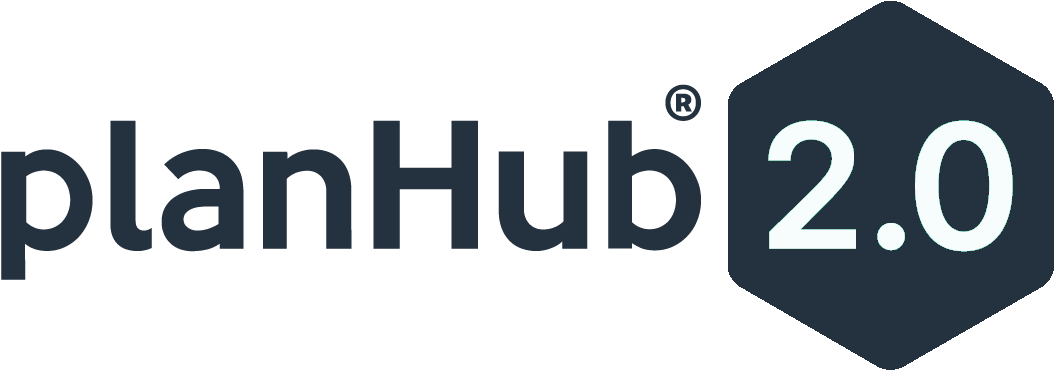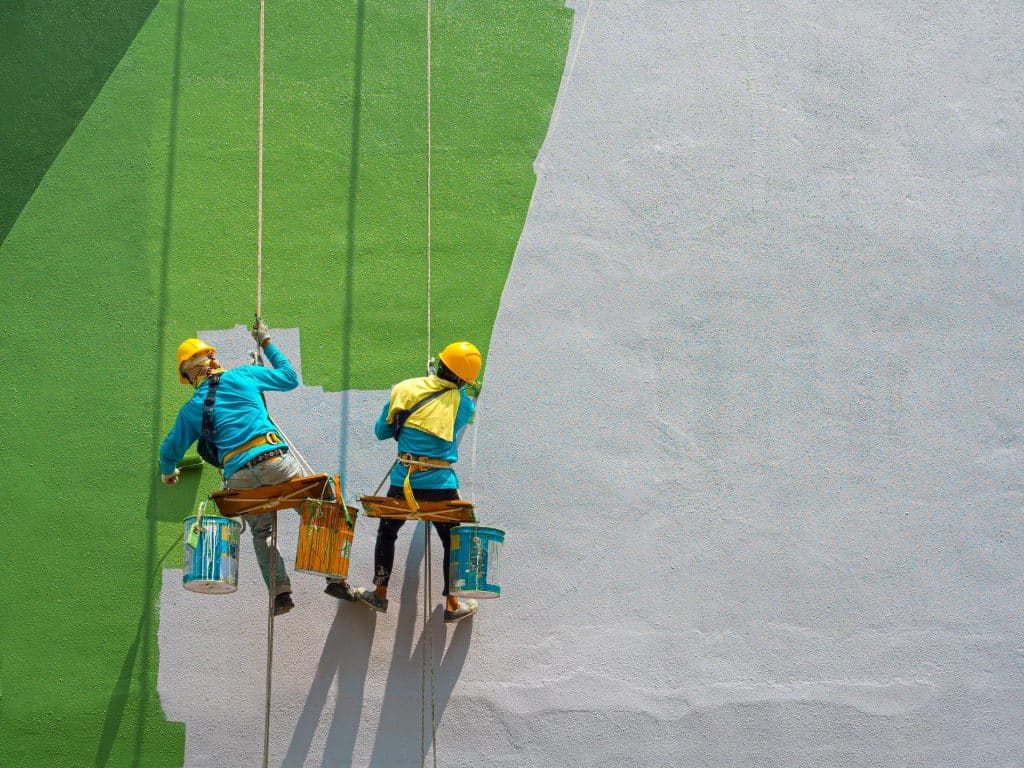Bidding a paint job begins with selecting the right project to bid on. Subcontractor bidding sites, like PlanHub, can help you find projects that fit your skills in your geographical area. Once you’ve selected a project to bid, you’ll review the bid documents, perform a material takeoff, get pricing from your suppliers, estimate labor, add overhead and profit, and create your proposal.
Let’s take a more detailed look at these steps to bid a painting job.
1. Choose the right project
Before quoting a painting project, you must know the best projects to bid for your company. Although most painting projects are similar in scope, there may be existing conditions or different surfaces that you haven’t dealt with before. Make sure you have the experience needed to bid on the project before spending time putting together an estimate. You don’t always have to be a professional painter or paint contractor, but do take into account the requirements of residential painting. Beyond the paint cost, you’ll also want to make sure the project is in your service area or add additional costs for travel, meals, and lodging for your workers. You may be invited to bid on projects or find bid advertisements in trade or specialty publications. Bid lead sites like PlanHub reduce your project’s marketing cost and help you find more projects that fit both your skills and location.
2. Review bid documents or make a site visit
For new construction, you will most likely be responding to an invitation to bid (ITB), a request for qualifications (RFQ), or a request for proposals (RFP). All of these will include plans and specifications that describe and show the scope of work to be performed. The specifications provide information on the materials to be used and how the work is to be performed. They may also specify the quality of work required by the project. Pay special attention to Divisions 01 and 09. Division 01 provides information on qualifications, payment terms, bonding, insurance, etc. Division 09 provides specific information about the project finishes, including painting product specifications and application methods.
If the project is a remodel or renovation, you may want to make a site visit to preview the working conditions. Installation time can be greatly affected by obstacles and conditions on the job site. For example, if you are bidding on an exterior painting project and there is a large tree in front of the building, that will affect how you approach that side of the building. You may have to rent scaffolding or other equipment as a standard ladder may not fit. You can also confirm surface measurements while at the site.
3. Perform a quantity takeoff
A quantity takeoff or material takeoff is a count of the amount of materials or supplies needed to complete the specified work. This prep work includes quantifying the necessary amounts of things like paint, caulking, masking tape, masking paper, etc. To perform a painting takeoff, you’ll need to calculate the surface area of the painting job. . Whether it’s an interior paint project or an exterior paint project, this can be done by reviewing the plans with estimation software, an electronic scale, or a ruler and highlighter. You’ll measure the length of each wall, calculate the height, and multiply them to get the square footage you need to cover. Using this method, complete a takeoff on all walls that are to be painted , accounting for each square foot. A gallon of paint will generally cover about 400 square feet. Calculate how many gallons of paint you’ll need by dividing the total square footage to be covered by 400. For example, if there are four walls in a room, each 10 feet long and 10 feet high, you’ll need to paint 400 square feet [(10 x 10) x 4]. Since a gallon of paint covers 400 square feet, you’ll need approximately 1 gallon for that room. Use wall lengths to determine the amount of masking products and caulking you’ll need. When you are finished with the takeoff, you should have a complete list of each material and supply needed to complete the project.
4. Price your materials and supplies
Once you’ve completed your material takeoff and have a list of materials and supplies, it’s time to price them and tally the overhead cost. Some of the materials you’ll want to take into account are: a paint tray, a drop cloth, a paint roller, etc. When getting a painting estimate, check with your suppliers on the price for the type of paint required by the project. Interior painting costs may differ from those of an exterior paint job. Be sure to negotiate with your supplier to get a reasonable price, especially if you purchase a lot of paint from them. This said, don’t try to trim costs too much; always go for the best quality paint. Price the additional supplies you’ll need if you don’t have stock on hand.
5. Estimate labor
Next, you’ll use your material takeoff to estimate the amount of labor it will take to prep and paint the project. The most common and accurate way to estimate labor is to use past project data. This involves using cost and labor data from previous projects to estimate how long a potential project will take. If you don’t have past project data to help you determine your labor hours, you can use a labor guide. Guides give you an estimate of how long it will take to paint a specified area. Once you know how long the project will take, either from your own data or a guide, multiply the total number of labor hours required by your fully burdened labor rate. A fully burdened labor rate includes worker wages, employer taxes, and benefits.
6. Add overhead and profit
Company overhead includes expenses not directly related to performing project work, but that are required to keep your business running. It consists of things like estimating and sales costs, administrative staff, insurance, marketing expenses, office rent, supplies, etc. It’s usually calculated by adding a flat percentage to the total project costs. If you don’t know your overhead percentage, consult with an accountant. Profit is usually calculated as a percentage of the total cost of the job.
7. Write your proposal
The sales price for the project is calculated by adding up material and supply costs, labor costs, overhead, and profit. It’s best to create a standardized form for all your proposals to ensure you’ve included everything. For more information about what a proposal should include, see our article “What Should a Construction Bid Look Like?”. If you don’t have a standard proposal template, here’s one you can use.
8. Review your proposal
Before sending your proposal, it’s always a good idea to have someone review it, math and all. Have them check your material takeoff, and all math used to create the price. This is especially true if you’re using a spreadsheet with a sum formula. It’s very easy to miss a cell or two and quote the wrong price. Check your estimate by comparing your price to past projects with similar size and scope. If there is a large difference, there may be a problem with your quote. Verify your takeoff and math again. Also, be sure to proofread your proposal and check formatting to ensure everything looks the way you want it to.
9. Submit your proposal
Now it’s time to turn in your proposal. If the project documents come with a bid form, be sure to use it. After you submit your bid, you may be asked to qualify it. The general contractor or project owner may contact you and question you about the scope of work you’ve included in your proposal. They may ask you to revise your proposal so they can compare it with others bidding on the same type of work. This is a routine procedure and is no reason to panic.
How to Bid a Commercial Paint Job
Bidding on a commercial paint job requires a strategic and detailed approach to ensure accuracy and competitiveness. Here is a step-by-step guide on how to bid a commercial paint job:
- Site Assessment: Begin by conducting a thorough assessment of the commercial property. Evaluate the size of the project, the type of surfaces to be painted, and any specific requirements or challenges.
- Materials and Labor Costs: Calculate the quantity and cost of materials needed for the project, including paints, primers, and any specialized coatings. Estimate the labor costs by considering the time required for surface preparation, application, and any additional tasks.
- Overhead and Profit Margin: Factor in your overhead costs, including equipment, insurance, permits, and administrative expenses. Determine a suitable profit margin that reflects the level of expertise and quality your company provides.
- Research and Analysis: Research the current market rates for commercial painting projects in your area. Analyze your competitors’ bids and pricing strategies to ensure your bid is competitive while still allowing for profitability.
Finding the right job for you
In order to maintain a successful painting business, you must always be searching for new work. PlanHub, a construction bidding website, helps you find new construction projects in your service area quickly and easily. Once you’ve found a job that fits your skills, use the steps above to write a winning proposal.
If you’re a painting subcontractor and you want to see how PlanHub can help you expand your business, contact us today.
In conclusion, mastering the art of bidding on painting jobs is crucial for success in the competitive field of commercial painting contracts. Leveraging advanced tools like painting estimating takeoff software can significantly enhance the precision and efficiency of the bidding process. As you navigate the intricacies of commercial painting bids, incorporating painting takeoff software into your strategy ensures accurate estimations, streamlined workflows, and a competitive edge in securing contracts. By embracing the capabilities of bid on painting contracts software, you empower your business to deliver precise and attractive proposals, setting the foundation for successful ventures in the dynamic world of commercial painting. As the industry evolves, adapting and integrating innovative technologies, such as painting estimating takeoff software, into your bidding approach will not only optimize your processes but also position your business for sustained growth and excellence in securing painting contracts.




